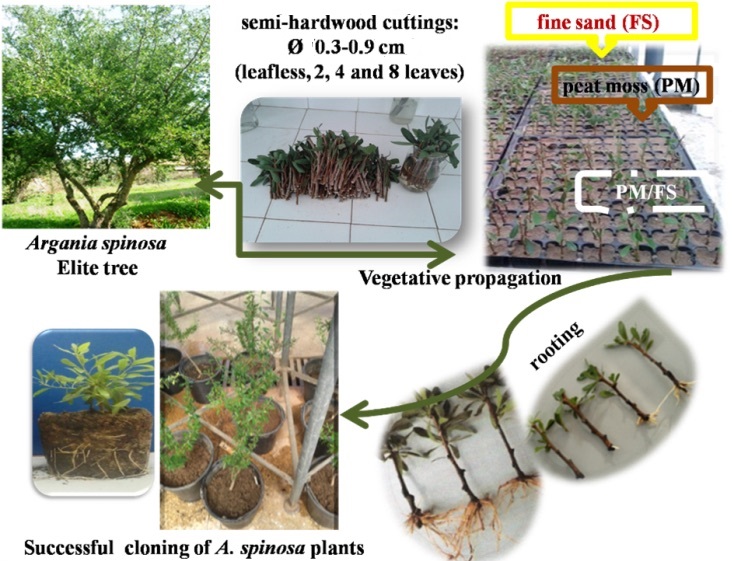The Clonal propagation of Argania spinosa (L.) skeels: effects of leaf retention, substrate and cutting diameter

Published 2021-02-01
Keywords
- Argania tree,
- rooting,
- semi-hardwood,
- vegetative propagation
How to Cite
Copyright (c) 2021 meriemmalaou Mdarhri alaoui, Souad Cherkaoui, Fatima Gaboun, Omar Chlyah, Fabienne Delporte

This work is licensed under a Creative Commons Attribution 4.0 International License.
Abstract
To evaluate the rooting ability and growth performance in semi-hardwood cuttings of Argania spinosa under non-mist greenhouse conditions, our experimentation was conducted with three cutting diameters (0.1-0.3, 0.3-0.6 and 0.6-0.9 cm), four leaf retention treatments (leafless, 2, 4 and 8 leaves) and three different rooting substrates (fine sand, peat moss, a 1:1 mixture of fine sand/peat moss). Significant effects of cuttings diameter, leaf retention and rooting substrate on sprouting, rooting and survival ability from A. spinosa semi-hardwood cuttings were observed. Among all diameters tested, a diameter of (0.3-0.6 cm) showed maximum rooting and survival capacity, while cuttings with a diameter of 0.6-0.9 cm resulted in the greatest sprouting ability. Successful vegetative propagation was restricted to leafy stem cuttings. Moreover, it was observed that the highest rooting ability was reached in cuttings planted in fine-sand substrate. However, the highest sprouting ratio (85.0%) and survival rate (92.5%) were achieved in a mixture of sand and peat moss. Thus, argan trees vegetative propagation could be most effectively achieved using semi-hardwood cuttings with a 0.4 cm diameter and 4 leaves, planted in a fine sand substrate during the root initiation period and grown in a mixture of fine sand and peat moss for hardening.




